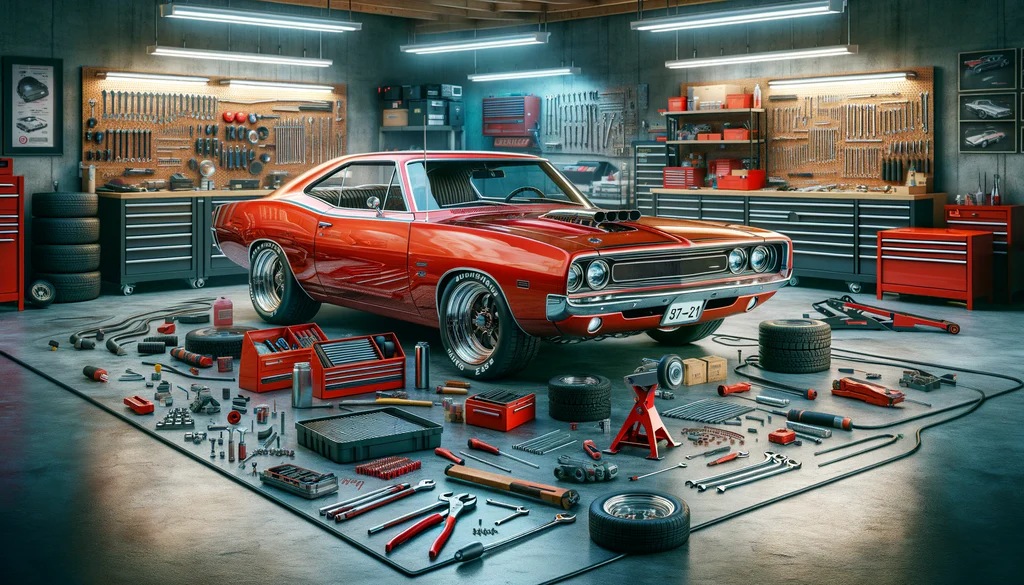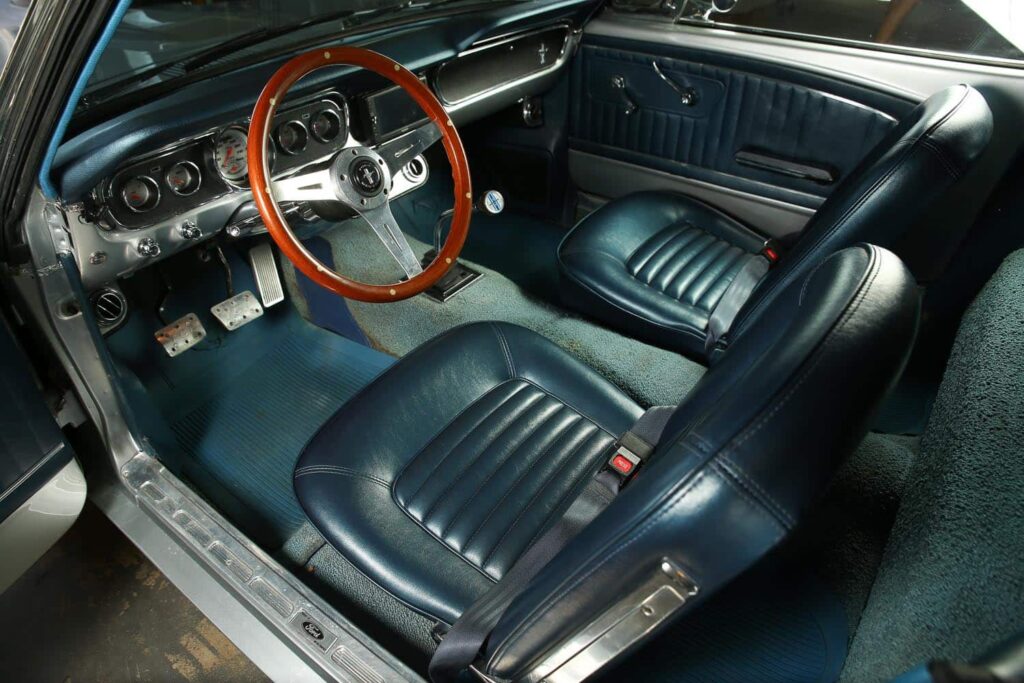Muscle cars represent a golden era of American automotive engineering, combining raw power, bold designs, and thrilling speed. For many car enthusiasts, these iconic vehicles symbolize freedom, rebellion, and a bygone era of adrenaline-fueled driving. As time passes, the allure of restoring classic muscle cars has only grown stronger, with passionate collectors and mechanics seeking to bring these legends back to life.
The muscle car era began in the 1960s, as American automakers responded to the growing demand for high-performance vehicles. Manufacturers like Ford, Dodge, and Chevrolet unleashed models that packed massive engines into mid-sized bodies, creating vehicles with unparalleled speed and power. From the Ford Mustang and Chevrolet Camaro to the Dodge Charger and Pontiac GTO, muscle cars quickly became cultural icons, loved by gearheads and celebrated in movies and on racetracks alike. Though their production peaked in the late 1960s and early 1970s, these vehicles remain revered symbols of American automotive dominance.

The satisfaction of transforming a rusted, worn-out shell into a gleaming, powerful machine is unmatched. Beyond the nostalgia, restoring muscle cars also offers a rewarding challenge, requiring technical expertise, creativity, and patience. So how exactly do you do it? Let’s find out!
Part 1: Finding the Right Muscle Car
Before diving into a muscle car restoration project, selecting the right car is crucial. Several factors must be considered, starting with the car’s overall condition. A vehicle in better shape may require less extensive bodywork and mechanical repairs, but rarer models, even in poor condition, may offer higher value once restored. Rarity also plays a big role—some models, like the Dodge Challenger HEMI or the Chevrolet Chevelle SS 454, are highly sought after by collectors, making them pricier and harder to find. Additionally, budget limitations are a key consideration. Not only does the initial purchase cost vary depending on the model and condition, but parts and labor can quickly add up during the restoration process.
Tips for Inspecting a Potential Purchase
Before purchasing a muscle car, conducting a thorough inspection is essential to avoid unforeseen costs. Start by checking for rust, particularly in the undercarriage, floor pans, and wheel wells, as rust damage can require significant repair. Inspect the body panels for dents, cracks, or signs of poor repair work. Examine the engine and transmission for wear and tear, and assess whether they match the car’s original specifications (matching numbers can significantly increase value). Pay attention to the condition of the suspension, brakes, and other mechanical components, as these can be costly to replace. If you’re unsure, consider hiring a professional mechanic or appraiser to evaluate the vehicle before making a commitment.

Part 2: Disassembly and Assessment
Essential Tools and Equipment for Restoration
Before disassembling the muscle car, make sure you have all the necessary tools and equipment. A sturdy hydraulic lift or jack stands are vital for safely working underneath the car. Basic hand tools such as wrenches, screwdrivers, and socket sets are required for removing bolts, nuts, and screws. You’ll also need specialized tools like a torque wrench, impact gun, and engine hoist for more complex tasks. For bodywork, an air compressor, sanders, and welding equipment are essential.
Disassembling the Car
Disassembly is the first major step in the restoration process, where you begin to strip the car down to its core. Start by removing the body panels, doors, hood, and trunk lid, which will allow better access to the car’s interior and mechanical components. Next, carefully disconnect the engine and transmission using an engine hoist, making sure to drain any fluids beforehand. The interior—including seats, dashboard, carpets, and trim—should be removed to fully assess the condition of the frame and flooring.
Assessing the Condition of the Car
Once the car is disassembled, it’s time for a thorough assessment. Rust is the primary concern, especially in structural areas like the frame, floor pans, and suspension mounting points. Evaluate all body panels for damage or warping, which may require replacement or extensive repair. Check for leaks, wear, and damage in the engine, transmission, and brake systems. Take note of the condition of electrical wiring, hoses, and connectors. Creating a detailed list of needed repairs or replacements, along with estimated costs, will help in forming a comprehensive restoration plan.
Creating a Restoration Plan and Budget
After the assessment, it’s crucial to map out a step-by-step restoration plan. Decide whether you’ll perform a factory-correct restoration (restoring the car to its original specs) or a custom build that incorporates modern upgrades. Outline the stages of the restoration—bodywork, mechanical repairs, interior refurbishment, and paintwork—along with the necessary parts, tools, and labor required. Be sure to include a detailed budget that accounts for both expected and unexpected costs, as surprises often arise during restoration. With a solid plan and budget in hand, you’re ready to move forward with confidence.

Part 3: Bodywork and Paint
Rust Removal Techniques
Rust is the enemy of any classic car restoration, so removing it effectively is critical to preserving the vehicle’s structural integrity and appearance. There are several methods for tackling rust, including sanding, which is effective for surface rust but may require chemical stripping or blasting for deeper corrosion. For severe cases, you may need to cut out the affected areas and weld in new metal panels. Rust converters and inhibitors can also be used to treat remaining rust and prevent future corrosion, ensuring a long-lasting restoration.
Body Panel Replacement or Repair
Once rust is removed, assess whether the body panels are salvageable or need to be replaced. Minor dents and dings can often be repaired using techniques like hammering or filling with body filler. In cases where the panels are too damaged or corroded, sourcing original or reproduction parts may be necessary. Replacement panels must be fitted and welded securely, followed by a detailed inspection to ensure the car’s lines and gaps are aligned properly, maintaining the vehicle’s aesthetic appeal.
Priming and Painting the Car
With the bodywork complete, the next stage is priming and painting. Start by applying a high-quality primer to protect the car’s metal surfaces and provide a smooth base for the paint. Color selection is an important part of the restoration, with many enthusiasts opting for the vehicle’s original color to maintain authenticity, while others may choose a custom hue to enhance its visual appeal. When applying paint, it’s essential to use multiple coats for a rich, durable finish.
Additional Body Modifications
Depending on your vision for the restoration, you might consider additional body modifications to enhance the muscle car’s performance or aesthetics. Popular modifications include adding spoilers, hood scoops, or custom trim to give the vehicle a more aggressive or personalized look. These modifications can be done tastefully to maintain the car’s classic appeal while incorporating modern elements. For those restoring cars for racing or performance purposes, weight reduction techniques and aerodynamic modifications can further improve the car’s capabilities.

Part 4: Engine Rebuild
- Engine Teardown and Inspection: Restoring the engine begins with a full teardown, inspecting every component for wear or damage. Key areas like cylinder walls, pistons, and bearings are thoroughly assessed, as precision at this stage is vital for future performance.
- Cylinder Head Reconditioning: Reconditioning the cylinder head includes a valve job and porting to improve airflow, boosting engine performance. This step ensures the engine’s long-term reliability and horsepower.
- Piston and Connecting Rod Replacement: Worn pistons and rods should be replaced with durable, high-performance options to enhance the engine’s power and longevity, especially if future modifications are planned.
- Crankshaft Grinding and Balancing: The crankshaft may require grinding and balancing to ensure smooth engine operation. Proper balancing reduces vibrations and prolongs engine life.
- Engine Assembly and Tuning: After reassembly, precise tuning is needed for optimal air-fuel mixture and ignition timing, ensuring the engine performs at its best.

Part 5: Drivetrain and Suspension
Transmission Overhaul or Replacement
A transmission overhaul replaces worn gears and seals, while a performance upgrade can enhance driving experience and power transfer.
Rear Differential Service or Rebuild
The rear differential should be serviced or rebuilt to ensure smooth power distribution and maximize traction for high-performance muscle cars.
Suspension Component Replacement
Restoring the suspension with new springs, shocks, and bushings improves handling and comfort. Upgrading to modern components can enhance stability and ride quality.
Alignment and Wheel Balancing
Proper alignment and wheel balancing are essential for smooth driving, improving handling, and extending tire life.

Part 6: Interior Restoration
- Remove and clean the interior to address underlying surfaces.
- Replace or repair upholstery for an authentic or custom look.
- Restore or replace the dash and console for improved aesthetics.
- Repair gauges and instrument panels for accuracy and functionality.
- Add custom interior modifications, like upgraded seats or audio systems, for enhanced comfort and style.

Part 7: Finishing Touches
- Exterior Polishing: The body is polished to a showroom shine, with chrome accents detailed.
- Interior Detailing: The interior is cleaned and treated for a pristine finish.
- Final Inspections: A thorough inspection ensures the car is road-ready.
- Enjoying Your Muscle Car: After restoration, take pride in driving a revived piece of automotive history!
Muscle car restoration is a meticulous process, but for those who undertake the task, the rewards are enormous. It’s an opportunity to breathe new life into a timeless piece of automotive history and create a rolling masterpiece that captures the spirit of an era defined by speed, style, and power.



